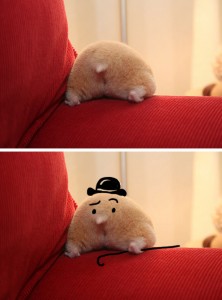Compact and quiet, furry and fun, hamsters are an engaging and easy-to-care-for pet. If you are looking for a fuzzy friend who is good company, doesn’t need much space and won’t bark at the mailman, a hamster may be a match for you. These little guys are the picture of cuteness: small, round, furry, and inquisitive. A great starter pet, right?
Cheeks and Pouches
The cheeks are one of the most unique parts of hamster anatomy. Most members of the hamster family have expandable cheek pouches that extend from the jaw to shoulders. These expandable pouches allow them to forage for an extended period of time and bring a surplus of food back to their burrows without making multiple trips. By minimizing the amount of time they are exposed to the elements and predators, they increase their chances for survival in hostile environments.
The Teeth
Hamsters use their teeth to chew seeds and other hard foods, shred materials to make sleeping nest and they use them to gnaw on pretty much anything in their living space. Foods that are hard can be a benefit since they help wear down the teeth. Seed mixes and commercial pellets are good options. In regards to nest building, a hamster will shred any type of paper or cardboard that you put into its cage, such as the cardboard from toilet paper rolls. This habit might not help keep the teeth short but conversely, if they are too long, they won’t be able to use them to help build nests or even eat for that matter.
Eye Color
White hamsters, also known as albinos, have red eyes. Other types of breeds have very dark eye color. The hamster’s eye color does not determine whether it is blind or not, nor, affects the degree to which it can see.
Nose
Hamster don’t have the best eye sight so their sense of smell must be heightened in order to locate food and smell incoming predators. A set of whiskers aid in the process of sensing and locating food. The nose itself is fairly sensitive with lots of nerve endings and plenty of blood-flow.
Ears
Hamsters have excellent hearing and can actually fold there ear up when they are trying to sleep. Loud noises in heavy traffic areas can really stress them out, so it’s best to keep your cage in a corner of a room that isn’t busy. Hamster ears can get ear mites which are contagious.



